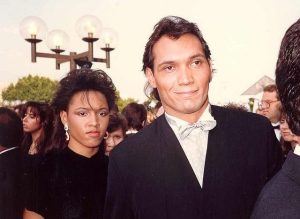Casting is changing in corporate video
When casting real people for your corporate video, your instinct might be to look for ready-made, 5-star performers. But perfect casting for your business story probably doesn’t look like the “perfect” employee. First, the perfect employee doesn’t exist, and second, corporate films that look too put together come across as contrived and artificial… because they are.
The rise of reality shows in pop culture, parallel to corporate and movie cultures realizing the need for faces and voices that actually represent the point of view of an employee at a firm or a character in a film, calls for something more than paid-actor advertising and a sea of bleached-teeth faces. The best corporate videos look realistic because they strive to be. And that authenticity, more than any message or pitch, is what reaches viewers and reaps results.
Cast Real People, not Picture-Perfect Ones
The people who tell their stories for Hollywood documentaries are cast for their complexity. They’re the socially awkward, brainiac scientist making huge, global change. They’re the hardest worker, whose tough upbringing made them a picture-perfect employee. They’re the ailing patient recovering from a complex medical issue.
When we watch a film with real people, we are looking for a strong relationship with reality. We want to watch a person who has a great story and can tell it authentically. We want to connect with those struggles, concerns, fears, and successes. There is nothing closer to experiencing something yourself than feeling like you understand the experience of someone else, and authentic casting in corporate film accomplishes just that.
Create a Corporate Video that Affects the Audience’s Reality
In the 1980s, Jimmy Smits played Victor Sifuentes on the television show L.A. Law. Sifuentes was one of the first multidimensional, highly-educated Latino characters on mainstream television—and his impact was tangible. More Latino students applied to law programs in the United States than ever before, inspired by a powerful role model on screen. One casting choice made a real-world difference.
Casting five leading actors with household names in your movie doesn’t have the same impact as an undiscovered talent who made a deep, personal connection with the narrative. This creates a duller corporate video. We don’t want to see George Clooney—we want to see someone that represents us.
We’re looking to see ourselves in the story. This is especially key for talent acquisition films and college recruitment videos. Videos that are white-washed or class-specific fail to engage the vast majority of viewers. If the audience can’t see themselves and people like them amongst a cohort at your business or a class at your university, what’s their drive to be there if they don’t know they’ll belong?
Cast Your Corporate Film Like a Documentary
When creating a film for your business, you have to think about casting like a real executive producer. Consider the impact you want the film to have in a holistic way. The choices you make in your casting need to reflect the purpose of the video. Just because someone has the ability to present themselves flawlessly doesn’t mean they’re the most effective choice for a part. For instance, corporate videos that include a CEO message to employees, partners, clients, etc., need the CEO – even if they stutter, even if they feel uncomfortable on camera. Your production partners will make you look good, don’t worry; your job is to speak your company’s truth, no matter how many times you get tongue-tied.
Consider the value of a nervous CEO telling a story versus a skilled actor who narrates a story about the CEO against images and clips, with no CEO to be seen. Even if the words and the message are the same, your organization’s video will fail to keep the viewer’s attention. If the CEO couldn’t be bothered to appear, why should the audience feel at all valued or involved?

Don’t Overlook Unassuming Talent in Your Employee Pool
Dennis Ritchie worked at Bell Labs in the 1970s. He invented the C programming language, the foundation of open source coding, and he changed the computer science field forever.
He worked so hard, he was known to sleep at the office overnight, under his desk.
Computer historian Paul E. Ceruzzi described Ritchie as “under the radar.” Ceruzzi said, “His name was not a household name at all, but…if you had a microscope and could look in a computer, you’d see his work everywhere inside.”
Upon first glance, the “under the radar” employees are the most overlooked in casting. But as the ‘executive producer’ of your video, you must do the research to find those compelling employees. The outcome will be well worth the effort.
In Pharma, Actors Can’t Sell Trustworthy Stories
Tribe has done work for many healthcare and pharma companies who want to establish trust with their audiences through the stories of real patients. Medicine is an ever-changing field of successes and failures; on a large-scale level this makes people uncomfortable. And illness is a deeply personal, painful experience; you can’t understand someone’s story about illness unless you hear it from them.
Pharma company videos that only feature data points and narrated stories only backed by picture and music do not engender trust in the audience. The film comes off as if your company has a wall up. And in a field that is as dynamic, fluid, and precarious as medicine, transparency is the only way to increase trust in your organization. How can you claim to be a patient-centered practice if there aren’t any patient testimonials in your pharma marketing video?
When Montefiore Medical Center asked Tribe to create a series of videos, we worked hard to find the right people to share their experience with the hospital system in their own words. Barbara and Joel Taub had a story of the deep respect and an emotional bond they formed with Doctor Corbelli through the course of multiple hip surgeries. Their love for each other and for life made their tale a pleasure to tell:

Tribe Pictures: Corporate Film Producers who Understand where Life Meets Art
Our diverse project portfolio of partners and our list of award-winning videos made for corporate, healthcare and educational entities is not why we’re an effective production company, just like your company’s fiscal year end reports aren’t why you’re an effective organization. Our success and our results, like yours, come from a nurturing and understanding of people: their worth, their needs, the poignancy of their stories, and the value of empathy.
With a creative video strategy centered in relationships, storytelling, and the authentic human aspect of every organization and every message, Tribe Pictures helps its partners create effective, cinematic corporate videos that engage, inspire, disrupt, and overcome obstacles.